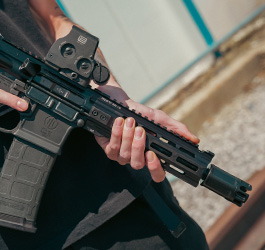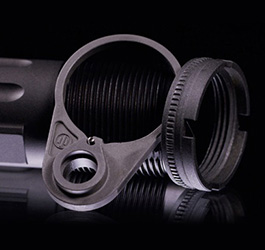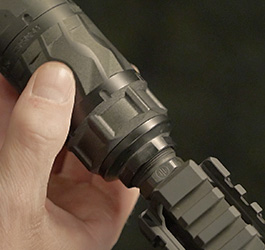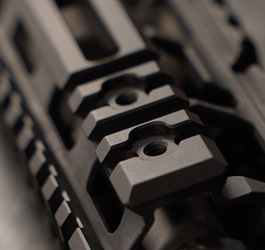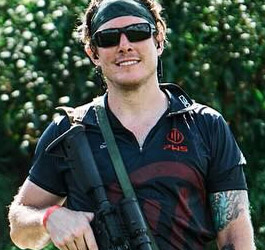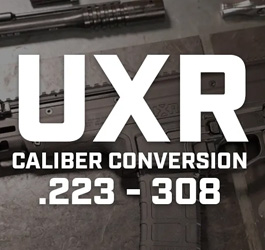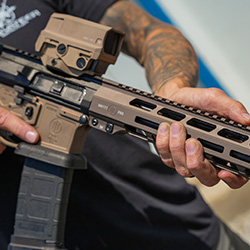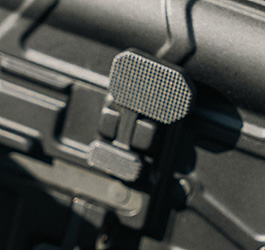Alpha vs. MOD 2-M: Two Suppressor-Optimized Uppers, Built for Different Missions
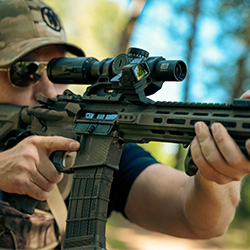
At first glance, the Alpha Upper and the MK114 MOD 2-M Upper might seem like variations on the same theme—both are .223 Wylde, both use PWS’s signature long-stroke piston system, and both are absolutely optimized for suppressed shooting. But under the surface, these two uppers take very different approaches to the same goal: delivering performance, reliability, and control—especially when a suppressor is involved.
So which one’s right for you? That depends on how you shoot.

Shared DNA: Built Around the Long-Stroke Advantage
First, the common ground. Both uppers run on PWS’s proven long-stroke piston system—a direct evolution of the AK-style system, re-engineered for AR platforms. It delivers less fouling, cooler operation, and unmatched reliability. For suppressed shooters, this system shines: it keeps carbon and heat out of the action, reducing wear and maintenance.
Now, here’s where things start to branch off.
The Alpha Upper: Precision Meets Suppressed Control
The Alpha is designed for the shooter who wants suppressed precision with rock-solid rigidity. Whether you're shooting from a bench, behind glass, or prone with a can on the end of your rifle, the Alpha offers surgical control and consistency.
Gas System Notes:
-
Adjustable Gas Block Placement (Forward of Rail): This is one of the Alpha’s most user-friendly upgrades. By placing the gas adjustment knob forward of the handguard, you can easily reach it even with optics, lights, or suppressors mounted—no tools required, no heat shields removed.
-
3-Setting Adjustable Gas System: You get full control over gas flow: ideal for tuning your rifle to specific suppressors or ammo, and minimizing back pressure.
-
Steel-Reinforced Rail Assembly: More than just tough, this design helps maintain zero and gas block alignment under heavy use—especially when adding suppressor weight and heat into the equation.
The Alpha is tuned for shooters who want the utmost consistency, with features that cater to suppressed accuracy and mechanical confidence.

The MK114 MOD 2-M: Lightweight, Suppressor-Ready, and Built for Movement
While the Alpha is a precision powerhouse, the MOD 2-M is built for mobility, suppression, and modularity. Think law enforcement, dynamic range work, and active shooters who need to stay light and fast—without giving up the benefits of suppressed fire.
Gas System Notes:
-
3-Setting Gas Adjustment (Rail-Enclosed Position): The MOD 2-M also features a tool-less, 3-setting gas block, though it sits slightly recessed under the handguard. While not as immediately accessible as the Alpha's design, it retains the same ability to tailor gas flow based on suppressor type, ammo, or preference.
-
Optimized for Suppressor Flow: The MOD 2-M’s internal piston design and port tuning offer a smoother shooting experience with cans, reducing gas-to-face and helping maintain consistent cycling.
-
FRC 3-Port Compensator: Built with suppressors in mind, the FRC mitigates muzzle rise and is compatible with the Rearden Atlas suppressor mount—a solid option if you’re looking for seamless integration.
The MOD 2-M favors the shooter who wants a refined, flexible upper that performs well in and out of suppression, with a strong focus on weight savings and maneuverability.
Side-by-Side: Suppressed Utility Breakdown
| Feature | Alpha Upper | MK114 MOD 2-M |
|---|---|---|
| Gas Block Access | Forward of Rail (Tool-less) | Under Rail (Tool-less, less accessible) |
| Suppressor Tuning | Yes – 3 settings | Yes – 3 settings |
| Use Case | Accuracy, rigidity, suppressor balance | Maneuverability, dynamic use, suppressor compatibility |
| Muzzle Device | Standard brake or flash hider | FRC Compensator (suppressor mount-ready) |
| Rail Assembly | Steel-reinforced, ultra-rigid | Lightweight PicLok™ hybrid |
-
Choose the Alpha if you’re prioritizing suppressed accuracy, easier gas tuning access, and ultra-solid construction. It’s built like a precision instrument—with the durability to back it up.
-
Go with the MOD 2-M if you want a lighter, more mobile platform that’s still optimized for suppressor use. It’s flexible, refined, and perfect for real-world applications where speed matters.
Both uppers are true to the PWS legacy: rugged, innovative, and built to run suppressed or unsuppressed with equal confidence. The real question isn’t which one is better—it’s which one fits your mission.






